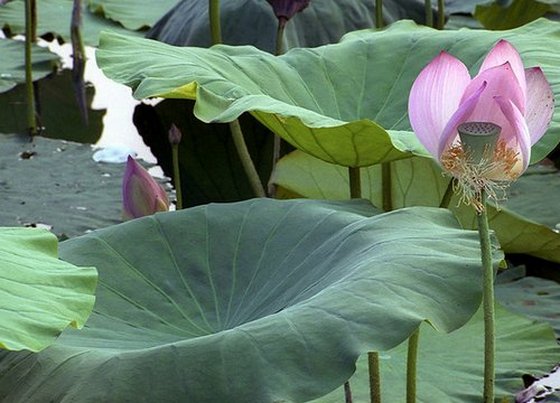
Lotus Plant Meaning and Growing Guide
Find out about the meanings associated with the Lotus Plant, and Learn How To Grow Lotus in your Garden Pond.
There are two main genera of plants that are considered to be Lotus, these are the Nelumbo and the Nymphaea. The Nymphaea are actually water lilies, though they have been known as the Lotus plant since the early days of ancient Egyptology, where the blue Lotus plant Nymphaea caerula is depicted as a flower from which the sun god emerges, and that is associated with rebirth.
Another species of water lily, Nymphaea nouchali is often referred to as the star Lotus, and like the blue Lotus it is considered sacred.
The true Lotus, tends to rise a lot higher out of the water than that of Nymphaea, and belongs to the genus Nelumbo.
Perhaps the biggest differences between the two kinds of Lotus lies in the root systems, Nelumbo tends to have a long tuber that is shaped fairly similar to that of a banana and is the color of a peeled potato; Nymphaea on the other hand has a root system that is more rhizome in nature. Another easy to spot difference between Lotus plants and water lily is that the former do not have split leaves.
The Nelumbo Lotus plant has a perennial nature, and is aquatic, it is well known in botanic circles for the fact that it's seeds remain viable for a very long time, some Lotus seeds discovered in north-eastern China that were estimated to be 1300 years old and were still able to be successfully germinated.

Lotus plant showing a whole leaf, one of the key distinguishing features between Nelumbo and Nymphaea.
Growing Lotus Plant in Your Garden
As the Lotus has such an elegant flower, and has many ties to spirituality and well-being, it is a fairly popular plant for people to try to grow in their water features or ponds. Unfortunately growing Lotus plants is not one of the easiest of things to do.
If you are planning to grow Lotus you should be aware that they will do best in a warm environment, and that they will require quite a large area of the pond in which to thrive; ideally a large variety should have an area of about 50 ft.² to grow in or be planted into a large tank of about 400 liters capacity.
Even if you plan to contain the Lotus plants within a container, and then place it in the pond, it is still very likely to spread through the pond in the ideal conditions, as the plant will produce large runners. It is therefore best to plant the Lotus into a deep pot.
Your first step should be to fill the container with heavy topsoil to a depth of 10 to 30 cm (depending upon the size of the pot, and a variety that you are planning to grow). Next the tuber of the Lotus should be laid flat on top of the soil, keep the soil very damp and muddy; the roots will soon form from the tuber and in doing so it will sink it into the soil.
Once the Lotus tuber becomes established more water can be added to the pot. If you are having problems because the tuber remains dormant, then it may be worth placing the pot on an heating tray.
The first few leaves that appear will float on the surface of the water, but after this the following leaves will start to go into the air, at this stage more water can be added to the pot. If you are planning to transfer the growing lotus plant, in the pot, into the garden pond, you should be aware that the water needs to be at a temperature of 21°C at the minimum, otherwise the plant may die, or perform badly.